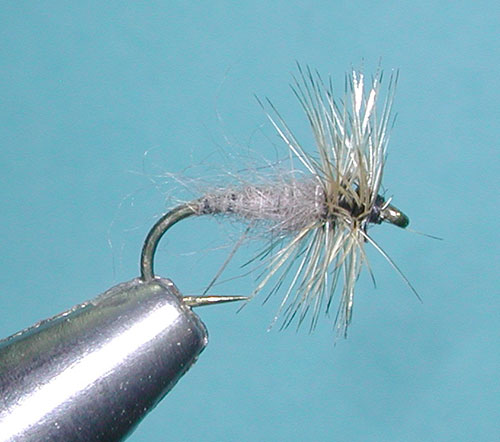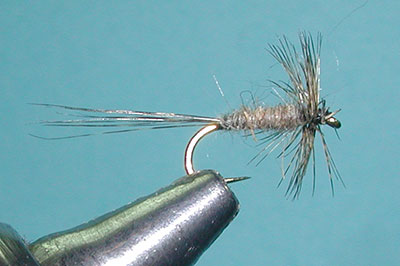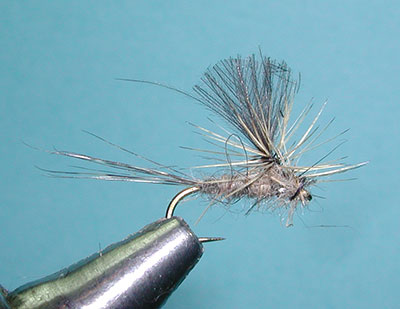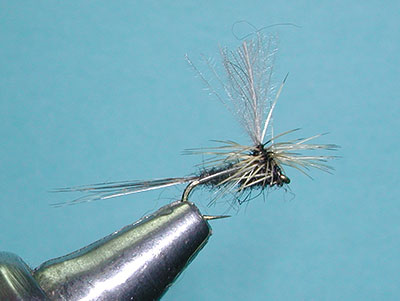

Gray Duster |
Materials:
(to Order Material, click the link)
|
|
|
Notes: The Grey (the English spelling of 'Gray') Duster goes back about a hundred years developed by Welsh anglers on the River Dee in England. It requires just two components, Hare's mask dubbing and a Badger Rooster saddle. It was designed as a stillwater midge yet you can change the coloration of the dubbing to fit a specific mayfly, a black dubbing makes a great trico pattern. Note that the above pattern has no tail, it is an emerger pattern. It rides low in the water with the hook hanging beneath the surface. Don't let the simplicity fool you, this pattern has been fooling trout for over a hundred years. The modern versions of this pattern have adapted the pattern to typical emerger type hooks such as a TMC 2487 or a Daiichi 1130. The problem is that after a few drifts, it will be difficult to see the fly so some have made variations using a tailing and wing component. "The Grey Duster is a truly remarkable fly that was originally designed as a still water midge imitation. It has become a successful versatile pattern throughout the season on rivers, streams and lakes.
This simple and uncomplicated fly seems to represent what the trout likes to eat.
No fly fisherman's fly box should be without a Grey Duster, as is it successful on both rivers and still waters. There may be occasions when a trout take the fly for sport or high spirits, jealousy, or curiosity, or some by-motive; but on these occasions it may be taken for granted that the temptation is scarce and that hunger is in abeyance."
|
||
Variations: |
|
Gray Duster (Dry) |
Materials:
(to Order Material, click the link)
|
Gray Duster (parachute) |
Materials:
(to Order Material, click the link)
|
Gray Duster (Trico) |
Materials:
(to Order Material, click the link)
|